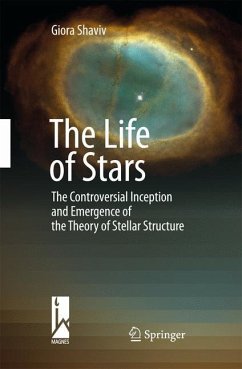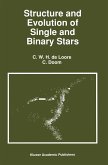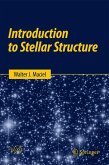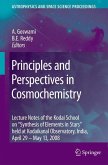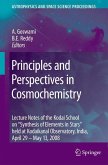It is the stars, The stars above us, govern our conditions. William Shakespeare, King Lear A Few Words about What, Why and How The structure of the stars in general, and the Sun in particular, has been the subject of extensivescienti?cresearchanddebateforoveracentury.Thediscoveryofquantum theoryduringthe?rsthalfofthenineteenthcenturyprovidedmuchofthetheoretical background needed to understand the making of the stars and how they live off their energysource. Progress in the theoryof stellar structurewasmade through extensive discussions and controversies between the giants of the ?elds, as well as brilliant discoveries by astronomers. In this book, we shall carefully expose the building of the theory of stellar structure and evolution, and explain how our understanding of the stars has emerged from this background of incessant debate. About hundred years were required for astrophysics to answer the crucial ques tions: What is the energy source of the stars? How are the stars made?How do they evolve and eventually die? The answers to these questions have profound im plications for astrophysics, physics, and biology, and the question of how we our selves come to be here. While we already possess many of the answers, the theory of stellar structure is far from being complete, and there are many open questions, for example, concerning the mechanisms which trigger giant supernova explosions. Many internal hydrodynamic processes remain a mystery. Yet some global pictures can indeed be outlined, and this is what we shall attempt to do here.
From the reviews:
"The story of stellar structure is interwoven with the development of quantum mechanics and the determination that nuclear fusion reactions produce the energy emitted by stars. The author provides excellent coverage of those two developments. He also effectively notes that stellar theorists often had access, in principle, to information that would have allowed them to take giant leaps toward a solution." (Robert Deupree, Physics Today, November, 2010)
"For historians of science, Shaviv has done a considerable service by searching out many obscure or forgotten papers amongst the important and well-known ones, and he does give references to almost everything. He adds quite extensive footnotes as well." (Robert Connon Smith, The Observatory, Vol. 131 (1220), February, 2011)
"I thoroughly enjoyed this book. ... it especially enjoyable for me were the tiny snippets or anecdotes which appear quite liberally throughout the book, sometimes in the main text but more usually as a footnote. ... The author, Giora Shaviv, is a leading theoretical astrophysicist. ... The writing style is easy and the book is exceedingly well referenced." (Roger Pickard, Journal of the British Astronomical Association, Vol. 120 (5), 2010)
"The story of stellar structure is interwoven with the development of quantum mechanics and the determination that nuclear fusion reactions produce the energy emitted by stars. The author provides excellent coverage of those two developments. He also effectively notes that stellar theorists often had access, in principle, to information that would have allowed them to take giant leaps toward a solution." (Robert Deupree, Physics Today, November, 2010)
"For historians of science, Shaviv has done a considerable service by searching out many obscure or forgotten papers amongst the important and well-known ones, and he does give references to almost everything. He adds quite extensive footnotes as well." (Robert Connon Smith, The Observatory, Vol. 131 (1220), February, 2011)
"I thoroughly enjoyed this book. ... it especially enjoyable for me were the tiny snippets or anecdotes which appear quite liberally throughout the book, sometimes in the main text but more usually as a footnote. ... The author, Giora Shaviv, is a leading theoretical astrophysicist. ... The writing style is easy and the book is exceedingly well referenced." (Roger Pickard, Journal of the British Astronomical Association, Vol. 120 (5), 2010)

